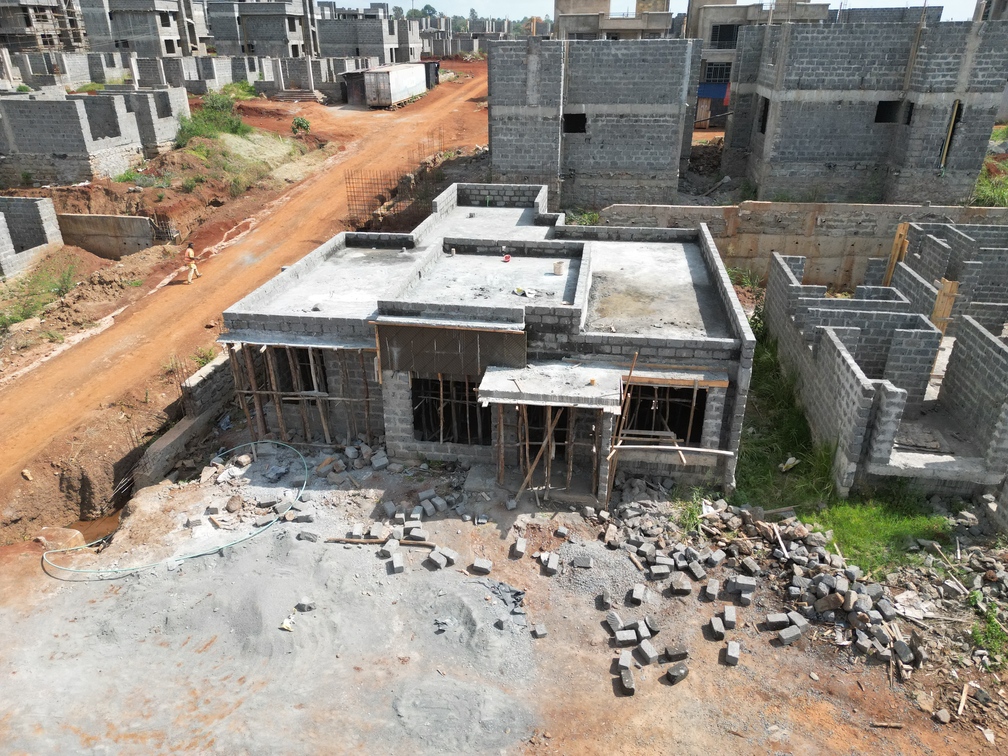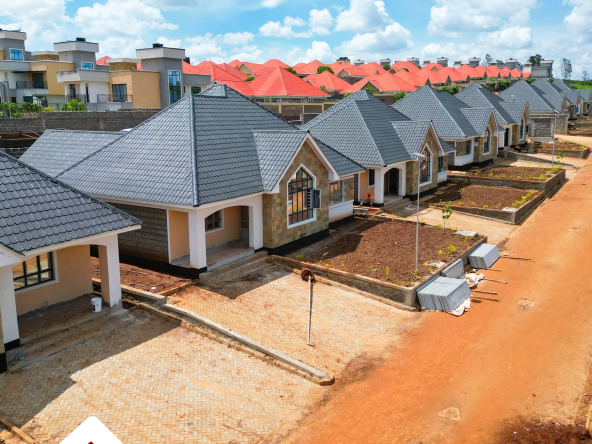Homeownership has long been a cornerstone of financial security and personal stability. In Kenya, however, this dream is becoming increasingly elusive for urban dwellers, especially in major cities like Nairobi. Despite robust construction activity and ongoing housing projects, homeownership in urban Kenya is on the decline. The 2023-2024 Kenya Housing Survey reveals a drop in national homeownership rates from 64% in 2013 to 61% in 2024, with urban areas seeing the sharpest declines. Conversely, rural regions remain largely unaffected, with over 80% of rural households still owning their homes.
This growing divide between urban and rural housing stability calls for a closer look at the factors contributing to the shift—and what it means for the future of homeownership in Nairobi and other urban centres in Kenya.
Skyrocketing Property Prices in Nairobi
One of the biggest obstacles to homeownership in Nairobi is the soaring cost of real estate. Over the past decade, property prices in key areas like Kilimani, Westlands, and Kileleshwa have risen dramatically. Today, a modest one-bedroom apartment in Nairobi can cost upwards of Ksh 7 million, while a three-bedroom home may exceed Ksh 15 million.
These high prices are driven by demand far exceeding supply, limited land availability, and speculative buying. For many working-class and even middle-income earners in Nairobi, these prices are simply out of reach.
In contrast, housing in rural Kenya remains far more affordable. The cost of land is lower, and many families already own plots passed down through generations, allowing them to build incrementally without taking on debt.
Read Also: Understanding Home Insurance in Kenya
Low Mortgage Uptake and High Interest Rates
Although mortgage products exist in Kenya, their uptake remains staggeringly low. As of 2024, there are only about 27,000 active mortgage accounts in the entire country—representing less than 1% of the population.
The reasons are clear: high interest rates, strict lending conditions, and long repayment terms deter potential homeowners. In Nairobi, banks require substantial down payments and proof of stable income—requirements that many cannot meet, especially in an economy where contract work and informal employment are on the rise.
Rural homeowners, on the other hand, often build their homes gradually using savings or income from agriculture, bypassing the need for loans altogether.
Economic Uncertainty and Urban Job Insecurity
Job security is another significant concern for Nairobi residents. Urban Kenya has a higher unemployment rate (approximately 12.7%), and even those who are employed often work on short-term or freelance contracts. The lack of stable income makes it difficult to commit to long-term financial obligations like mortgages.
Rural economies, while less formalized, offer greater stability through subsistence farming, small-scale businesses, and inherited property. These conditions support incremental homebuilding, allowing families to invest in their homes over time.
Lifestyle Shifts Among the Urban Youth
A cultural shift is also taking place, particularly among younger urban residents in Nairobi. Millennials and Gen Z professionals increasingly prefer renting over buying, valuing flexibility and mobility. The ability to relocate easily for work or lifestyle reasons makes renting more attractive than being tied down by a mortgage.
This preference for mobility also reflects broader global trends in urban housing. However, in rural Kenya, cultural norms still prioritize homeownership as a rite of passage and a symbol of family continuity.
Read Also: The Future of Nairobi’s Informal Settlements
Affordable Housing Remains a Mirage
The Kenyan government’s Affordable Housing Program, launched to deliver 250,000 units annually, has struggled to meet its targets. While the initiative is a step in the right direction, most of the units being constructed are still out of reach for the average Nairobi resident due to pricing mismatches and slow delivery.
Private sector developers often focus on high-margin projects for upper-middle-class buyers, leaving low- and middle-income earners underserved. This gap has left many Nairobians stuck in the rental market indefinitely.
The High Cost of Living in Nairobi
The rising cost of living in Nairobi adds another layer of difficulty. As of early 2025, Kenya’s inflation rate stands at 6.8%, with urban centers like Nairobi bearing the brunt in terms of transport, food, and utilities. These everyday expenses consume most of the disposable income that could otherwise be saved for homeownership.
In contrast, the cost of living in rural areas is significantly lower, allowing residents to dedicate more of their income to building or improving their homes.
Land Scarcity and Expensive Development Costs
Nairobi’s urban sprawl has led to a severe shortage of affordable land for residential development. Land prices in Nairobi’s prime zones have surged by over 40% in the past five years, and regulatory hurdles around zoning and permits further delay projects. The additional costs associated with utilities, infrastructure, and compliance make urban construction even more expensive.
By contrast, rural land is more accessible and often free from such bureaucratic complexities, making it easier and cheaper to develop homes.
Read Also: REITs in Kenya: The Future of Wealth Building Through Real Estate Investment
Bridging the Urban-Rural Housing Divide
The data paints a stark picture: urban homeownership in Nairobi is declining, not because people don’t want to own homes, but because the current economic and structural conditions make it nearly impossible for many to do so. Meanwhile, rural communities, thanks to generational land ownership and incremental building practices, continue to maintain high rates of homeownership.
To reverse the trend in cities like Nairobi, a multi-pronged strategy is needed. This includes:
- Reforming mortgage policies to make borrowing more accessible and affordable
- Scaling up genuinely affordable housing projects that match urban income levels
- Reducing bureaucratic delays and cutting development costs through public-private partnerships
- Providing financial education and savings programs for first-time homebuyers
Homeownership in Nairobi, Kenya, is becoming a dream deferred for many urban dwellers. From high property prices and inaccessible mortgage products to economic instability and shifting lifestyles, the challenges are many. Rural Kenya, by contrast, remains a stronghold of homeownership thanks to lower costs and deeply rooted land traditions.
As Nairobi continues to grow, policymakers and developers must act decisively to ensure that urban residents are not permanently priced out of owning homes. Making homeownership accessible isn’t just an economic necessity—it’s a matter of social equity and long-term national stability.




